Discover the key to unlocking the door to your dream...
Read MoreTrump’s Tariffs Are Here: What Could They Mean for Your Home (and Salt Lake's Housing Market)?

A Quick Recap: Trump’s April 2025 Tariff Announcement
On April 2, 2025, President Donald Trump unveiled sweeping new tariffs on imports. He imposed a 10% baseline tariff on all imported goods and much higher rates on certain countries with big trade surpluses. For example, imports from China now face a hefty 34% tax (the European Union faces 20%, among others). These tariffs, aimed at boosting U.S. manufacturing, have raised concerns about higher costs for American businesses and consumers. Many experts warn that such broad tariffs “threaten to dismantle much of the architecture of the global economy” — APNEWS.COM. But what do they mean for the housing market? In the next few sections, we’ll break down how these tariffs could impact home construction costs, mortgages, and home prices nationally – and then zoom in on what it could mean specifically for homeowners in Salt Lake, Utah.
Building a Home May Get More Expensive
One immediate effect of tariffs is higher construction costs. Tariffs are essentially taxes on imported materials, and the U.S. homebuilding industry relies on many imported products. For instance, a huge share of the lumber used to frame houses comes from Canada. With Trump’s new policy, even friendly trading partners like Canada and Mexico face extra duties. Softwood lumber from Canada, which makes up about 85% of U.S. imports, could see effective tariffs surge well above 50% when combined with existing duties. Builders will have to pay more for basic wood, drywall (gypsum), steel, aluminum, and other inputs needed to build homes. In fact, home builders estimate that recent trade actions have already added about $9,200 to the cost of constructing a typical single-family home — NAHB.ORG.
Why such a big number? Consider lumber: “The major component of a house is lumber,” notes one Utah realtor, “so when we have to buy that at an increased rate from another country, the cost of that is not going to be eaten up by the builders.” In other words, builders will pass these higher costs on to buyers. The National Association of Home Builders (NAHB) reports that roughly 7% of all goods used in new U.S. home construction are imported – from Canadian wood and Mexican drywall to Chinese-made fixtures and appliances. Tariffs on these goods act like a tax on every new home. Even before this latest announcement, building material prices had jumped 34% since December 2020, partly due to supply chain issues and earlier trade policies. Now, with new tariffs, experts predict even more cost pressure. Some builders and suppliers are already raising prices in anticipation of the tariffs — KUER.ORG.
It’s not just new homes – renovations and appliance purchases could get pricier too. Many home appliances (like refrigerators, washing machines, and ovens) and home fixtures are imported from Asia or Europe. With a tariff “baseline” of 10% on all imports, even products not singled out for extra-high tariffs will cost a bit more. So if you plan to remodel your kitchen or build an addition, expect higher bids from contractors as their costs rise for imported tile, lighting, or appliances.
Supply Chains and Inventory: Will Home Building Slow Down?
Tariffs can also tangle up supply chains. When imported materials become more expensive or harder to get (especially if other countries retaliate or companies shift suppliers), it can cause delays and bottlenecks. The NAHB warns that these tariffs could “wreak havoc on the building material supply chain” — NAHB.ORG. We all remember the supply headaches of the past few years – from lumber shortages to back-ordered appliances – and this trade policy could add fuel to that fire. If builders can’t get materials on time, construction projects might take longer to finish. In some cases, builders might even pause or cancel projects if the economics no longer make sense.
What does that mean for housing inventory? In many parts of the country, including Utah, we already have a housing shortage – not enough homes available for the number of people who want to buy. Slower construction could make that worse. Fewer new homes being built means buyers will be competing for the limited existing houses on the market. Tight inventory tends to push home prices up, all else being equal. Builders big and small are trying to gauge how to proceed: some may speed up projects in the very short term (to finish before costs climb too high), but others may hold off on starting new developments until there’s more certainty.
There is a bit of a silver lining: many builders foresaw the tariff announcement and tried to stockpile critical materials in advance. This means ongoing projects might be insulated for a little while. For example, if a Salt Lake builder bought six months’ worth of lumber earlier this year, they can keep building in the near term without immediately hiking prices. However, once those supplies run out, new orders will reflect the tariff-inflated prices. Homebuyers and real estate agents might see a temporary dip in new listings or construction starts as everyone waits to see how bad the cost increases get.
Tariffs and Mortgage Rates: A One-Two Punch on Affordability
Housing costs aren’t just about the price of the home – they’re also about the interest rate on your mortgage. Here, the tariffs could have an indirect but important effect. By raising prices on many goods, tariffs can contribute to higher inflation (when everything gets more expensive). And when inflation rises, the usual response is higher interest rates to combat it. If companies pass on their higher import costs to consumers, “tariffs can potentially drive up inflation… Higher inflation usually means higher interest rates.” — INVESTOPEDIA.COM.
In plain English: if the cost of living spikes, lenders will likely charge more to loan you money for a house. We’ve already been experiencing higher mortgage rates recently. If the new tariffs keep inflation from easing, the Federal Reserve and financial markets may keep interest rates elevated. Many experts expect rates to remain high for now. So, homebuyers could be hit with a double whammy: higher home prices and higher borrowing costs.
Home Prices: Could Tariffs Cool the Market or Heat It Up?
With all these cross-currents, what happens to home prices and the number of homes for sale?
It’s a balancing act. On one side, higher mortgage rates and increased construction costs are likely to slow down buyer demand. When affordability drops, some people hit pause on their home search. On the other side, we’ve still got historically low inventory—especially in places like Salt Lake—which can keep prices climbing simply because there aren’t enough homes for the number of buyers out there.
So, where does that leave us?
Nationally, economists expect a bit of a tug-of-war. Tariffs may cool the market by making homes more expensive to build and finance, but they might also keep prices up by choking new construction. The most likely outcome? Prices will keep rising—but at a slower pace. Don’t expect a major drop unless something else dramatic shifts in the market.
In fact, even in mid-priced markets, homes are still selling and still appreciating, despite all the headlines about rates and inflation — KSL.COM. As one Salt Lake agent put it:
“Homes are still selling; homes are still appreciating… the marketplace is still functioning and still thriving, even with this outside noise.” — KSL.COM
And that “outside noise”? It’s interest rates, tariffs, supply chains—everything buyers and sellers are hearing about in the news.
With all these cross-currents, what happens to home prices and the number of homes for sale? It’s a bit of a balancing act.
On one hand, higher mortgage rates and higher construction costs can dampen demand – fewer people can afford to buy, and some might delay purchasing, which would normally slow down price growth. On the other hand, if inventory remains very low (because building slows and current owners stay put), competition for homes can keep prices climbing.
Nationally, many housing economists are watching this tug-of-war. We might see a scenario where price growth slows compared to the red-hot market of a couple years ago, but prices still inch upward due to scarce supply. In other words, tariffs could take some heat out of buyer demand (since affordability worsens), but they could also discourage building enough that supply tightens.
The net effect might be that home prices level off or rise only modestly – rather than any sort of large drop. In fact, in some mid-priced markets around the country, real estate agents report that homes are still selling and even appreciating despite higher rates and economic uncertainty — KSL.COM.
As one Salt Lake City agent put it, “Homes are still selling; homes are still appreciating… the marketplace is still functioning and still thriving, even with this outside noise.” — KSL.COM
That “noise” refers to things like interest rates and now tariffs.
Salt Lake Spotlight: How Might Our Local Market Be Affected?
What about here at home in the Salt Lake City area? In many ways, Utah’s housing market is a microcosm of the national trends – but often on steroids. We’ve had rapid population growth and in-migration (people moving in) over the past decade, which has fueled housing demand.
In fact, Utah’s population is projected to grow by half a million people in the next nine years, according to the University of Utah’s Kem C. Gardner Policy Institute — UNIVERSE.BYU.EDU. A good chunk of that growth is focused on the Wasatch Front (Salt Lake, Utah, Davis, and surrounding counties), thanks to a strong economy and job opportunities. This influx – including many Californians and others moving here – has “been jacking up the price of housing” in recent years, contributing to an affordable housing crisis as one local official described — UNIVERSE.BYU.EDU.
Even before these tariffs, Salt Lake City and the broader Utah market were dealing with a shortage of homes. Home construction has struggled to keep up with the number of new households. Rising interest rates in 2022-2023 slowed things a bit, but as of early 2025 the market remains tight.
Consider that the median home price in Utah is now around $524,000 (Salt Lake County is in that ballpark) — KUER.ORG – a figure that would have seemed unbelievable a decade ago. Wages have grown, but not nearly as fast as home prices, making affordability a top concern for locals. Governor Spencer Cox even set a goal to build 35,000 new starter homes by 2028 to help ease the shortage — KUER.ORG.
Now enter the tariffs into this picture. Utah homebuilders are nervous, and for good reason. A lot of the building materials used in our state come from abroad or next-door neighbors like Canada and Mexico. As noted earlier, lumber, drywall, and metal products are key imports.
About 70% of drywall (gypsum) used in the U.S. comes from Mexico — NAHB.ORG, and Utah builders rely on that for constructing homes. If those imports get hit with tariffs at the border, the cost to frame and finish new houses in Utah will rise.
“Any jump in the cost of building materials could, ultimately, increase new home prices,” a Utah industry representative told KUER radio — KUER.ORG. And those jumps are already happening: some suppliers have preemptively increased prices even before the tariffs took effect — KUER.ORG, and builders are inserting clauses in contracts to account for possible price changes mid-project.
The short-term effect in Salt Lake City could be that builders pull back on some projects or focus on higher-end homes (where the margins can absorb cost increases) rather than entry-level housing. That’s a bit ironic and unfortunate, because what Utah needs most is more affordable starter homes.
If it suddenly costs, say, $10k more to build each home, a builder might decide not to go forward with a development of modest townhouses and instead build a few luxury homes where they can charge more to make up the difference.
Governor Cox has called the tariff plan a “huge gamble” for the economy — KUER.ORG. He’s hopeful it might boost American industry in the long run, but he’s openly concerned that in the near term it could make Utah’s housing crunch worse. State officials are monitoring the situation closely, even forming a task force of economists to advise on the impacts — KUER.ORG.
For Salt Lake City home buyers, this could mean continued competition and upward pressure on prices, especially for new construction. It might also mean longer wait times for new homes to be completed (if backlogs occur) and possibly settling for less inventory on the market.
For sellers, it likely means home values should remain relatively strong (since demand still outstrips supply), but selling and then buying another home in the area could be just as challenging as ever due to the cost issues.
Renters might feel an indirect effect too – if would-be buyers stay in apartments longer because they’re priced out of homeownership, that can tighten up the rental market as well.
Let’s put it in perspective with a real-world example: Imagine a local construction company planning to build a new 100-home subdivision on the edge of the Salt Lake Valley. They budgeted each house at $400,000 to sell, based on material costs and labor from last year. Now, tariffs come along and add maybe 5-10% to their material costs. That could be around $20-30k extra per home in expenses.
The builder has a few choices: raise the sale prices (if the market will bear it), cut costs elsewhere (which is hard – maybe use cheaper finishes?), or slow down the project (perhaps build 50 homes now and wait on the rest). None of these options is great for housing affordability. Most likely, they’ll try a combination: raise prices a bit and build a bit slower.
As a result, buyers of those homes will pay more, and there will be fewer homes available each year than originally planned. Multiply that scenario across many builders, and you see how an already tight housing market (like Salt Lake’s) could stay tight or even tighten further.
What Salt Lake Homeowners, Buyers, and Sellers Should Watch For
All of this might sound a bit daunting, but being informed can help you navigate the next few years. Here are some near-term things to watch and tips for different folks in the housing market:
Homeowners (and Potential Sellers):
If you already own a home in the Salt Lake area, your property value will likely hold steady or even increase as inventory remains limited. That’s good news for your equity. However, if you plan to upgrade or remodel, budget extra for those projects – the cost of lumber, steel, and imported fixtures is rising due to tariffs.
Also, keep in mind that if you sell your home and hope to buy another in the area, you’ll be jumping into the same high-cost market as a buyer. It might be wise to lock in a mortgage rate early for your next home if you’re selling, because rates could creep up if inflation persists — INVESTOPEDIA.COM.
Lastly, even though values are up, don’t assume buyers will pay absolutely anything – with higher interest rates, many buyers are near their affordability limits. Pricing your home reasonably will be key to attracting offers in a tighter credit environment.
Buyers:
Be prepared for a challenging market. Affordability is the big issue – tariffs themselves won’t directly determine what you pay for a house, but they contribute to a chain reaction (higher construction costs, higher consumer prices, possibly higher mortgage rates) that makes everything a bit pricier.
If you’re looking at new construction, talk to builders about how they handle sudden cost increases. Some builders might include clauses in contracts for price adjustments if material costs spike (so read the fine print). Also, consider that with new homes likely costing more, you might see increased competition for existing homes as buyers shift their focus – so broaden your search and be ready to act fast if a good listing comes up.
It’s also more important than ever to shop around for your mortgage and maybe look at rate lock options or buydowns; with rates high and possibly rising, securing a slightly lower rate can save you a lot over the life of the loan.
Keep an eye on local housing reports: if you see a big drop in building permits or new listings, that’s a sign inventory is tightening further (meaning you may need to adjust your expectations on price or timing).
Renters (hoping to buy):
If you’re currently renting in the Salt Lake area and saving up to buy, these tariffs mean you might need to exercise a bit more patience and diligence. The path to homeownership could get a bit longer if home prices keep climbing.
Don’t be discouraged, but do re-evaluate your budget. Rising prices and interest rates can change what you can afford. It might be worth exploring first-time buyer programs, or even looking slightly outside the most in-demand neighborhoods for better deals.
Also, keep an eye on the broader economy – if the tariff situation leads to a noticeable economic slowdown, we could see home price growth stall or mortgage rates even dip, which might create a window of opportunity for buyers in a year or two. Stay flexible and informed.
Overall, Salt Lake City residents should watch how this tariff saga unfolds nationally. If there are negotiations or policy changes (for instance, if trading partners strike deals or if any tariffs are rolled back for certain goods), that could quickly alter the outlook.
In the near term, though, expect a bit of turbulence. The tariffs are a new layer on an already complex housing market puzzle. As one local news outlet bluntly put it: “Housing prices are already sky-high. Now new homes will be even more expensive because of Trump’s tariffs on building materials.” — FACEBOOK.COM
That sums it up — the cost of housing isn’t poised to drop anytime soon.
The Bottom Line
For homeowners and buyers in Salt Lake City, the next few years will likely require careful planning and patience. Trump’s April 2025 tariffs have introduced a new factor that could drive up construction costs and keep pressure on mortgage rates and home prices.
Nationally, the residential housing market may feel a pinch in higher building expenses and potentially slower construction. Locally, in Utah’s high-growth market, those effects could be amplified, given our strong demand and limited supply.
While your home’s value may remain strong, the ability to buy that next home or for newcomers to enter the market is going to be tougher.
The best advice for now is to stay informed. Pay attention to news from official sources on how trade relations evolve, watch local housing statistics (like inventory levels and price trends), and consult with real estate and financial professionals as you make decisions.
This is a dynamic situation; tariffs could be adjusted or removed, or they could stick around and shape the market for years. By understanding the connections – tariffs to costs, costs to prices, prices to what you pay or gain – you’ll be better equipped to make the right moves in the housing market.
Despite the headwinds, Salt Lake City’s housing market is resilient. People still want to live and invest here, and that underlying demand is a powerful force.
As a homeowner or aspiring homeowner, focus on what you can control (your budgeting, the timing of your moves, locking in rates, etc.), and be ready to adapt as conditions change. The road might get bumpy, but with the right knowledge and preparation, you can navigate the impacts of these tariffs on your housing journey in the coming years.
How Can I Increase My Buying Power
Boosting your buying power for a home in Utah involves improving your credit score for better interest rates, decreasing debt to lower your debt-to-income ratio, saving for a bigger down payment to reduce loan amounts, exploring loan programs with favorable terms, and increasing your income to afford higher mortgage payments.
FAQ
Will these tariffs make my home more valuable?
Yes, most likely — but don’t get carried away.
Because tariffs could slow down new construction (thanks to rising costs and supply chain delays), fewer homes might hit the market over the next year or two. That means less inventory, which usually pushes prices up — or at least helps them hold steady. So if you already own a home in Salt Lake, your equity could continue to grow.
But keep in mind: high interest rates are also putting pressure on buyer budgets. So while values might rise, they might do so a little slower than what we saw during the boom years.
Is now a bad time to buy with all this going on?
Not necessarily — it depends on your personal game plan.
If you’re planning to buy and hold long-term (which most buyers are), then locking something in now might actually help you beat future price increases. Tariffs are likely to increase the cost of new construction and may keep inventory tight — so prices aren’t expected to drop dramatically.
Yes, interest rates are higher than they were a few years ago, but you can always refinance later. The bigger risk is waiting too long and facing even higher home prices due to supply getting squeezed even more.
Should I hold off on remodeling my home?
Only if you’re flexible on timeline or budget.
If you’re planning a renovation or addition, it’s true that materials like drywall, lumber, fixtures, and appliances may cost more in the coming months as these tariffs kick in.
If your project is cosmetic or optional, you could wait to see how prices settle. But if it’s something more functional (like upgrading an aging kitchen or finishing a basement), talk to your contractor now and see if you can lock in pricing before costs climb higher.
Also — if your renovation will boost your home’s value in a tight market like Salt Lake, it might still be worth it even at today’s prices.

Alex Lehauli
Alex Lehauli is a Salt Lake native with extensive knowledge of the Utah housing market. He is a top producer with multi-million dollar sales volume and has valuable skills in strategic marketing, negotiation and guiding clients. He is an associate broker at Black Diamond Realty and passionate about building lasting relationships as a trusted real estate resource.
Table of Contents
See other Blogs
NAR Reaches Agreement to Resolve Home Seller Class Action Lawsuits
Discover the seismic shift reshaping the real estate landscape as...
Read MoreWill Home Prices Go Down in Salt Lake in 2024?
With a mix of easing interest rates, low inventory, and...
Read More
- Salt Lake Metro Area
- 801-891-9436
- Team@alexlehauligroup.com




